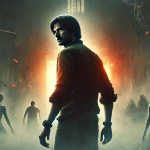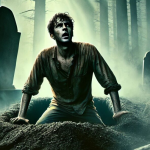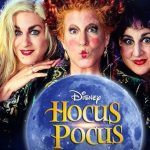𝙃𝙖𝙡𝙡𝙤𝙬𝙚𝙚𝙣 (𝟭𝟵𝟳𝟴)

Halloween 1978 Extended Version
𝙎𝙪𝙜𝙜𝙚𝙨𝙩𝙚𝙙 𝙫𝙞𝙙𝙚𝙤𝙨 𝙛𝙤𝙧 𝙮𝙤𝙪:
[Movie Review] Tremors: A Cold Day in Hell
𝙎𝙪𝙜𝙜𝙚𝙨𝙩𝙚𝙙 𝙫𝙞𝙙𝙚𝙤𝙨 𝙛𝙤𝙧 𝙮𝙤𝙪:
[Movie Review] Furious 7 (2015)
𝙎𝙪𝙜𝙜𝙚𝙨𝙩𝙚𝙙 𝙫𝙞𝙙𝙚𝙤𝙨 𝙛𝙤𝙧 𝙮𝙤𝙪:
[ Movie Review ] Legend of Retired Cop Against Drug Empire || The Last Stand
𝙎𝙪𝙜𝙜𝙚𝙨𝙩𝙚𝙙 𝙫𝙞𝙙𝙚𝙤𝙨 𝙛𝙤𝙧 𝙮𝙤𝙪:
[Movie Review] The Legend of a Hero Specializing in Hunting the Most Terrible Monsters in Greece
Halloween (1978), directed by John Carpenter, is a seminal slasher film that has had a profound impact on the horror genre and pop culture at large. It introduced audiences to the iconic character of Michael Myers, a masked killer who, after a 15-year silence, returns to his hometown to murder a group of teenagers. The film is often credited with setting the template for modern slasher films, establishing many of the conventions that would dominate the genre for years to come.
Plot Overview
The story of Halloween revolves around Michael Myers, who, as a six-year-old boy, murders his sister on Halloween night in 1963. After being incarcerated in a psychiatric hospital for 15 years, Michael escapes on Halloween night in 1978, returning to his hometown of Haddonfield, Illinois, to continue his killing spree.
The film primarily follows Laurie Strode (played by Jamie Lee Curtis in her breakout role), a high school student who unknowingly becomes Michael’s next target. While Laurie is babysitting two children, Michael stalks her through the dark streets of Haddonfield, creating an atmosphere of mounting terror as she becomes aware of the threat. Laurie, with the help of her friends and the local sheriff, must survive the night and avoid becoming the next victim of the relentless killer.
Dr. Loomis (Donald Pleasence), Michael’s former psychiatrist, becomes obsessed with stopping his patient after Michael escapes from the hospital. Loomis, aware of Michael’s violent tendencies, races against time to prevent further bloodshed, but as the night progresses, he becomes more desperate to track down the killer.
Themes
At its core, Halloween is about evil personified, with Michael Myers representing an almost supernatural malevolence that is relentless and inexplicable. His mask, a simple, expressionless face, makes him a blank canvas of evil — a faceless entity that cannot be reasoned with or understood. This lack of motivation is what makes Michael so terrifying, as his actions are not driven by revenge or any form of understandable rationale but by a need to kill for reasons unknown.
The film also touches on the theme of “final girl” archetype, with Laurie Strode being the one character who survives, a convention that would become a staple in slasher films to follow. Laurie’s innocence and purity are contrasted with the other characters’ carefree behavior, reinforcing the idea that those who engage in reckless behavior (i.e., sexual activity) are often the ones who fall victim to the killer, while the virginal, good girl survives.
Moreover, the film plays with the idea of fear of the unknown. Michael Myers, often referred to as “The Shape,” is a figure of pure terror because his motivations are left unexplained. The audience is given little backstory on Michael’s past, creating a sense of mystery and heightening the fear of something inexplicably evil lurking in the shadows.
Cinematic Impact
One of Halloween’s most remarkable features is its direction by John Carpenter. Carpenter used minimalist techniques to craft suspense and terror, and much of the film’s success can be attributed to his use of music, pacing, and camera work. The eerie, unforgettable score, composed by Carpenter himself, is one of the most recognizable soundtracks in cinema history. Its haunting piano melody, simple yet effective, became synonymous with the film and has been copied countless times in subsequent horror films.














